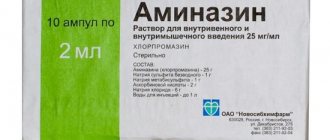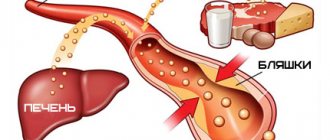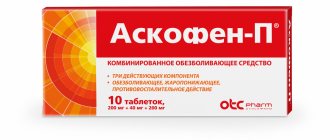To quickly cope with the symptoms of a hangover, a person is given IV drips. This is the fastest and most effective way to deliver medications into the blood. To compensate for the lack of fluid in the body, a glucose-saline solution and an isotonic solution are given, which have a diuretic effect and remove breakdown products of alcohol.
Preparations for droppers can be used to restore salt and acid-base balance and improve metabolism. We will try to describe what the droppers contain, which are given for pronounced hangover symptoms.
You cannot install IVs yourself. This can only be done by medical personnel. If a person does not have such experience, then he can simply kill the patient. The article was written only to make it clearer to you how the body changes after alcohol intoxication and what the drip contributes to.
Call us now:
8
Prices for Ultramed clinic services
Does an IV help cope with a hangover?
Let's figure out how droppers work, why in some cases tablets are prescribed orally and in others only droppers. For the drug to have its effect, it must enter the bloodstream as soon as possible. If drugs are administered intravenously, they completely dissolve in the blood. If the medication comes in another way, then part of it remains in the organs, thereby reducing the effectiveness of the action. If, for example, you take a medicine orally, some of it will remain in the intestines and liver.
A dropper will deliver the drug into the blood faster and more efficiently.
When a drip is given to get rid of the symptoms of a hangover, it contains substances that have maximum bioavailability. Bioavailability is the amount of a drug that reaches its site of action in the human body.
Contraindications to plasmapheresis
Like any other procedure, plasmapheresis has some limitations: absolute and relative contraindications. The need for its use is determined by the attending physician after a comprehensive examination of the patient. Plasmapheresis is absolutely contraindicated in case of serious damage to vital organs (these include the brain, heart, lungs, kidneys and liver), as well as in case of massive bleeding. Due to the high risk of complications, including death, plasmapheresis is not performed if the patient has the following absolute contraindications:
- Cardiovascular diseases (especially the right parts of the heart muscle);
- Cerebrovascular accidents;
- Arterial hypertension (excessively high blood pressure);
- Anemia;
- High blood clotting;
- Blood too thick;
- Acute and chronic liver dysfunction;
- Drug addiction and neuropsychiatric disorders.
Blood purification is prescribed with caution in the following conditions:
- Tendency to bleed;
- Ulcerative lesions of the digestive tract;
- Arrhythmias, low blood pressure;
- Insufficient level of protein in the blood;
- Infectious processes in the acute stage;
- Menstruation (women).
Expert opinion
Alexey Vasiliev
Head of the Department of Neurology, Candidate of Medical Sciences, neurologist of the highest category
“High-volume plasmapheresis is considered the gold standard treatment for a wide range of neurological diseases. It is performed for patients with severe, aggressive multiple sclerosis, acute disseminated encephalomyelitis, myasthenia gravis, chronic inflammatory demyelinating polyneuropathy and many other diseases. This treatment method has a pronounced therapeutic effect, is safe and accessible to patients.
At the Department of Neurology of the Yusupov Hospital, plasmapheresis is performed with a volume of 2-2.5 liters per session. Such intensive use of plasmapheresis allows you to maximally cleanse the body of toxins and antibodies that destroy the myelin sheath of nerve fibers. After several sessions, patients note a decrease in the symptoms of the underlying disease and a general improvement in well-being.”
Droppers used to thin the blood
For this purpose, glucose-saline solutions are used, that is, a five percent glucose solution and a saline solution alternate. This solution reduces the alcohol content in the blood and replenishes the lack of fluid in the body by thinning the blood. Indeed, with alcohol poisoning, there is a decrease in the amount of blood that circulates in the human body. In addition, glucose-saline solutions have a diuretic effect.
If an alcoholic coma develops, then blood pressure drops. In this case, it is recommended to use plasma-substituting solutions of hydroxyethyl starch, which retain fluid within the vascular bed and extract it from the body tissues.
What to do after plasmapheresis?
Plasmapheresis is a safe procedure, but after it is performed a person may feel somewhat lethargic and tired. To quickly restore vitality, you must adhere to the following rules:
- Plasmapheresis can be tolerated easily by one person, but difficult by others. This depends both on the quality of the procedure and on the individual characteristics of the patient himself. It is important, even if you feel unwell, not to panic, but to simply relax without overloading yourself that day. If symptoms (headache, high blood pressure or temperature) do not go away within a few hours after plasmapheresis, you should consult a doctor. The medical staff of the Yusupov Hospital will ensure that the patient’s recovery after the plasmapheresis procedure is timely and without complications;
- On the day of the procedure, you should not overheat or sunbathe on the beach, take hot baths, go to the sauna or bathhouse, as elevated temperatures can cause vasodilation, and, as a result, headaches and dizziness;
- Hot foods and drinks should be avoided for several hours after the procedure;
- a protein diet after plasmapheresis is an important factor in recovery, since proteins, the main components of cells that support the activity of the whole organism, are washed out of the body along with plasma;
- If the patient feels well after the procedure, he can safely return to daily activities.
Plasmapheresis has an excellent temporary effect that can delay the development of autoantibodies or toxins that provoke the appearance of many diseases. Improvement should be expected within a week, depending on the severity of the initial disease and the general condition of the person.
Droppers to restore water-salt balance
To restore this balance, it is possible to use special polyionic solutions of crystalloids. You can use the drugs Acesol or Disol. You can also prepare the following solution using glucose: magnesia, potassium chloride and insulin are mixed with a ten percent glucose solution. All this is introduced to restore disturbances in the metabolism of microelements in the body. Indeed, due to prolonged consumption of alcohol, the balance of anions (potassium, sodium and others) and cations (organic acids, chlorine and others) is disturbed, which can lead to heart dysfunction and metabolic disorders.
Detoxification drugs
Popular drugs for detoxifying the body, which are administered intravenously:
- Hemodez N;
- Reamberin;
- Rheosorbilact;
- Neocompensan;
- Reopoliglyukin;
- Gelatinol.
Action of drugs:
- detoxification (removal of toxins, cleansing of the body);
- antioxidant (reducing the degree of oxidation of lipids and proteins);
- improvement of rheological properties of blood (dilution) and microcirculation;
- antihypoxic effect (saturation of blood with oxygen and improvement of metabolic processes).
Droppers to restore acid-base balance
Acetaldehyde, which is formed from absorbed ethanol, binds enzymes. Thus, adducts are formed that are associated with organ diseases. Acidic products accumulate in tissues, and due to the fact that their binding or destruction occurs in insufficient quantities, metabolic acidosis can develop. Metabolic acidosis is a disorder of the acid-base state, which is manifested by low blood pH and low bicarbonate levels in the blood. If the acid-base balance in the body is disturbed, this can lead to systemic disorders, because biochemical reactions occur only at certain pH values.
If a person falls ill with acidosis, then, based on the severity of the disease, shortness of breath, muscle pain, loss of consciousness, malaise and other nonspecific symptoms are possible.
When treating acidosis, the patient is administered a four percent solution of sodium bicarbonate in its pure form; it is not mixed with other solutions. This solution is used in strict dosage. During the procedure, the level of acid-base balance is regularly checked.
This method of treatment, which is based on the introduction of different solutions of a specific volume and content into the blood circulation, in order to restore pathological losses of the body or to prevent them is called infusion therapy. Infusion therapy can restore the amount and composition of extracellular and intracellular fluids through parenteral administration of medications.
How is plasmapheresis performed?
The plasmapheresis technique involves centrifuging blood inside a plasma filter, where it is separated into plasma and red blood cells. The process of plasmapheresis occurs as follows:
- First, the patient is placed in a chair. A sterile catheter connected to a plasma filter tube is inserted into one of his peripheral veins;
- The device starts running a program that determines the required volume of liquid to be withdrawn. Blood is automatically drawn from a vein into a machine where the blood is divided into fractions;
- at the end of the procedure (the time of plasmapheresis depends on the therapeutic purpose pursued), the blood, the plasma of which was replaced with a plasma substitute substance or donor plasma, is returned back.
Plasmapheresis is considered the safest method of blood purification among other similar methods. Moreover, its obvious advantage is painlessness, since the blood purification procedure itself is carried out extracorporeally. Plasmapheresis is always monitored by a doctor or nurse who is able to provide timely assistance to the patient if necessary.
Droppers to cleanse the body of alcohol breakdown products
To detoxify the body of an alcohol-dependent person, the drugs Reamberin and Mafusol are used. In addition to having a balanced electrolyte composition, they contain components of a system of biochemical reactions through which the human body receives its main energy as a result of the oxidation of food. This process is called the tricarboxylic acid cycle.
This is an ever-repeating biochemical process in which acetyl residues are oxidized to carbon dioxide. This is the most important moment of respiration of all cells that use oxygen, the intersection point of most metabolic pathways in the body. By participating in such reactions, the components of the drug help with poisoning, oxygen starvation, and naturally with acidosis. That is, the drugs further activate metabolism, as a result of which all alcohol burns out in the tricarboxylic acid cycle.
Principle of plasmapheresis
Plasmapheresis is a gravitational method of extracorporeal detoxification (blood purification outside the human body).
During centrifugation, centrifugal forces act on the blood. The shaped elements are arranged in layers around the axis of rotation. The densest cells (erythrocytes) move to the periphery. Closer to the center are the formed elements of blood, the density of which is less (leukocytes and platelets). Pure plasma remains in the center of the separation chamber. In the case of therapeutic plasmapheresis, it is removed entirely, with all the physiological and toxic components it contains, and replaced with fresh frozen donor plasma or blood substitutes.
Plasmapheresis is regarded as a universal efferent method that allows you to influence toxins of any nature, electrochemical charge, molecular weight. In recent years, plasma membrane filters have become widespread. They allow you to separate the liquid part of the blood from the formed elements.
Plasmapheresis is used as an independent method of extracorporeal blood purification or as part of detoxification measures, if the plasma obtained by plasmapheresis is exposed to sorbents, filtration, precipitation (interaction with an agent, as a result of which a precipitate forms). When carrying out plasma exchange, a certain volume of the liquid part of the blood is removed. Then at least 70% of the removed volume is replaced with fresh frozen donor plasma or a 5% albumin solution.
Currently, doctors are increasingly using selective plasmapheresis methods. They are based on cryoheparin precipitation. Selective plasmapheresis techniques can increase the efficiency of the procedure and reduce the amount of required plasma replacement media. The cryoapheresis method is based on the property of the plasma protein fibronectin to form polymers in the presence of heparin in the cold and precipitate. Using this technique, from 30% to 50% of immunoglobulins M, A and G, fibrinogen, the C3 component of complement, and peroxide-modified lipoproteins are removed from the patient’s body, while maintaining up to 85-90%.
Droppers with glucose solutions
If a person is heavily intoxicated, his blood glucose level decreases. And glucose, as you know, is the main substance for obtaining energy in the body, and its lack can lead to disruption of the functions of brain cells. After all, alcohol suppresses the formation of glucose and wastes its reserves in the liver. In addition, during a hangover, glucose is used to increase metabolism and maintain body temperature. If the patient is already exhausted by this time, or has been on a drinking binge for a long time, then this situation poses a mortal danger.
To replenish the amount of glucose, the patient is infused with glucose solutions, to which small doses of insulin are added so that the body cells can more easily utilize glucose.
IS IT POSSIBLE TO DIGGLE YOURSELF?
Self-medication during binge drinking is dangerous for the patient. Only a qualified psychiatrist-narcologist can prescribe a drip for alcohol intoxication. The slightest inaccuracy in determining treatment can lead to worsening of the condition or even death. Incorrect installation of a catheter in a vein is fraught with painful hematomas, thrombosis, and phlebitis.
The drug treatment clinic of Dr. Lazarev in St. Petersburg at the address Lodygina Lane, 7, k.2 will help patients get out of binge drinking anonymously at home and in the hospital. You can sign up for an IV or call a doctor at home by calling: 8.
You can anonymously place an IV for alcohol intoxication at Dr. Lazarev’s clinic. No information needs to be provided. The only information that is needed is about chronic diseases and the duration of the binge. And, of course, the voluntary consent of the patient.
Only a physician is able to assess the severity of an alcoholic’s condition, decide on his hospitalization if necessary, select medications for an intravenous drip, and give further recommendations.
Therapy of acute alcohol intoxication
First, you need to make sure that alcohol is no longer absorbed from the stomach. The patient needs to be given activated charcoal, gastric lavage with a probe, or by mechanically stimulating the root of the tongue to induce a gag reflex.
In order for the patient to come to his senses as quickly as possible, 10 ml of a five percent solution of pyridoxine is injected intramuscularly. Then prepare a mixture of 0.01 g of amphetamine, 0.2 g of cardiazol and 0.1 g of niacin and, having previously dissolved it in 100 ml of water, take it orally. Improvements occur within a quarter of an hour. The autonomic nervous system comes into order, mental overstrain subsides, the patient’s actions become harmonized, and after an hour or an hour and a half the patient completely sobers up, returning to a normal state.
Sometimes, for quick sobering up, 20 ml of a forty percent glucose solution, fifteen units of insulin, 10 ml of a five percent solution of ascorbic acid and 1 ml of a one percent solution of niacin are injected intravenously.
Previously, in medical clinics, hemodez was administered intravenously, half with an isotonic solution of sodium chloride, in combination with a solution of potassium and magnesium asparaginase, a five percent solution of pyridoxine, a five percent solution of thiamine and a five percent solution of ascorbic acid. But when using hemodesis, especially if it was used incorrectly, sometimes blood pressure dropped sharply and acute renal failure developed.
Recently, for these purposes, 10 ml of metadoxyl in 500 ml of physiological solution is most often administered intravenously. The medication activates enzymes that break down ethanol. Thanks to this, oxidation is accelerated and ethanol and acetaldehyde are removed from the body faster. It also normalizes the balance of lipids in the plasma, blocks the occurrence of liver cell degeneration, prevents the synthesis of glycoprotein, and reduces the possibility of liver dysfunction.
Types of procedure
There are two types of plasmapheresis:
- Therapeutic, the purpose of which is to remove various toxic substances from the body along with “contaminated” plasma;
- Donor - plasma is taken from a healthy person - a donor, and is subsequently infused into a patient in need.
In addition, depending on the method used to obtain plasma, plasmapheresis can be:
- Hardware;
- Centrifuge;
- Membrane;
- Sedimentation;
- Cascading.
Plasmapheresis is essentially similar to many other methods of cleansing the blood of toxic elements.
After blood is collected from the venous bed, it is sent through a special tube to the machine. Then, depending on the type of plasmapheresis, various procedure options are possible:
- During centrifugal plasmapheresis, plasma is separated from formed elements in a special device rotating at high speed. Then the formed elements are returned back into the bloodstream, and the plasma is removed from the device and disposed of;
- With membrane plasmapheresis, plasma is separated using a special filtration system. Thanks to the use of disposable filters, which are removed after use, the likelihood of contracting viral infections (HIV infection, hepatitis C) is reduced to zero;
- The principle of cascade plasmapheresis is not similar to other techniques described above. During this process, the resulting plasma is additionally filtered. This method allows you to remove high-molecular compounds from the body. When a high degree of purification is achieved, the plasma is returned back.
Treatment of alcoholic psychosis
To carry out therapy, it is necessary to hospitalize the patient, it is better if he is in
in the intensive care unit of a drug treatment clinic, where the patient is always under the watchful supervision of medical staff. How is delirium delirium formed? If a person suffers from long-term drinking bouts, then his liver function, which is responsible for the inactivation and elimination of harmful substances, is impaired, and this in turn affects the entire central nervous system and leads to disruption of water-electrolyte balance and vitamin metabolism. Due to a hangover, psychosis begins to develop. This is often preceded by an epileptic seizure, inflammatory disease, or injury. If treated incorrectly, it can cause acute damage to the midbrain and hypothalamus (Haye-Wernicke syndrome).
Therapy is carried out using droppers. The patient is administered approximately two liters of glucose solution and saline solution per day, in combination with electrolyte solutions or potassium or magnesium asparaginase. Large doses of vitamins of different groups are used. Do not use hemodez!
Indications for use
The procedure is indicated for a variety of diseases and pathological processes that lead to the formation and accumulation of pathological elements in the blood. Plasmapheresis at the Yusupov Hospital is carried out if patients have the following diseases and conditions:
- Sepsis – to reduce the number of bacteria in the blood;
- Long-term compression syndrome - to remove formed toxic substances;
- HIV infections;
- Autoimmune pathologies – to remove aggressive autoantibodies;
- Atherosclerosis;
- Liver diseases accompanied by elevated levels of liver enzymes;
- Poisoning (toxic substances, medications);
- Severe alcohol intoxication, drug addiction.
Plasmapheresis is also prescribed to people suffering from:
- Oncological diseases;
- Damages to the heart muscle;
- Hypercholesterolemia (high levels of “bad” cholesterol in the blood);
- Complications after a heart attack;
- Rheumatism;
- Diseases of the organs of vision;
- Kidney pathologies;
- Myocarditis of viral etiology;
- Pulmonary vascular diseases;
- Bronchial asthma;
- Alveolitis;
- Pneumonia;
- Crohn's disease;
- Nonspecific ulcerative colitis;
- Diabetes mellitus
- Diseases of the reproductive system;
- If there is a Rh conflict during pregnancy;
- Acne;
- Dermatological problems (allergic rashes, psoriasis, urticaria, etc.);
- Neurological diseases.
The blood purification procedure is indicated for people who have problems with the skin (allergic rashes, psoriasis), joints, eyesight, and urinary system. Plasmapheresis sessions stabilize the condition of patients with multiple sclerosis, thromboembolism, alcoholism, and drug addiction. They are performed in the presence of Rh conflict during pregnancy.
The American Academy of Neurology has established the following indications for plasmapheresis in neurology:
- Severe form of Guillain-Barre syndrome;
- Chronic inflammatory demyelinating polyneuropathy;
- Polyneuropathy with monoclonal gammopathy with a possible role of IGG/LGA;
- Crisis or preparation for surgery of patients suffering from myasthenia gravis;
- Multiple sclerosis.
Plasmapheresis is successfully used to treat about two hundred diseases. The procedure, combined with drug therapy, can significantly improve the condition of patients and eliminate existing symptoms of diseases. Membrane plasmapheresis at the Yusupov Hospital is successfully used to treat cancer. High results of the procedure are ensured by the latest equipment and extensive experience of doctors.
Dietary supplements inexpensively
Alcoholism is a serious condition in which the patient needs professional help. In addition, in many cases it is important to maintain confidentiality - for example, if he is pursuing a career while simultaneously overcoming an addiction to alcohol. The KORSAKOV drug treatment clinic offers all residents of Moscow and Moscow Region a detox drip service on an outpatient basis.
Free consultation right now!
Online consultation with a specialist on your issue!
License number: LO-77-01-019036
Prices for inpatient treatment
| Detoxification | price, rub.) |
| Hepatoprotective dropper | 2000 |
| Liver recovery program 5 days | 12000 |
| Program “3 days” | 34600 |
| Program “4 days” | 43600 |
| Program “5 days” | 52600 |
| Medical nutrition | 4000 |
| Vascular drip | 1000 |
| Cerebroprotective drip | 2000 |
Prices for treatment in the outpatient department
| Detoxification | Price, rub.) |
| 1 day program - Basic | 1200 |
| 1 day program – Detox | 3500 |
| 1 day program – Detox intensive | 8000 |
| 1 day program – Detox intensive+ | 12000 |
| Liver recovery program 5 days | 12000 |
| Dropper Basic | 800 |
| Dropper Basic+ | 1200 |
| Dropper Reinforced | 2000 |
| Hepatoprotective dropper | 2000 |
| Vascular drip | 1000 |
| Cerebroprotective drip | 2000 |
Prices for calling a doctor to your home
| Services | Prices (RUB) |
| Consultation with a narcologist at home | 3000 |
| Consultation with a narcologist at home with hospitalization | 3000 |
| Consultation with a psychiatrist at home | 3500 |
| Detoxification | |
| Program "Basic" | 3000 |
| Program "Start of Sobriety" | 4900 |
| Program "Stop binge drinking" | 7000 |
| Hospital at home program | 21000 |
| “Detoxication” program for drug addiction | 4000 |
| “Return to Sobriety” program for drug addiction | 6000 |
| Additionally | |
| Hepatoprotective dropper | 3700 |
| Vascular drip | 3500 |
| Carrying out tubing | 300 |
| Simple sedation | 250 |
| Increased sedation | 500 |
| Therapist visit | 2700 |
| Daily tablet treatment for alcoholism | 150 |
| Daily tablet treatment for drug addiction | 200 |
Alcohol - fight!
“I suffer from alcoholism. I'm going to code, but I want to clean the blood first. Is it worth doing? Oleg, Kimry
- Costs. But keep in mind: during plasmapheresis, along with alcohol toxins, enzymes that break down alcohol are also washed out of the blood, which increases sensitivity to alcohol. Therefore, drinking alcohol (even in small doses) after this procedure is absolutely contraindicated and even dangerous. So, after undergoing plasmapheresis, it is better for you to immediately be coded for alcohol dependence.
Prepared by Tatiana GURYANOVA AiF-Health dated June 24, 2010









